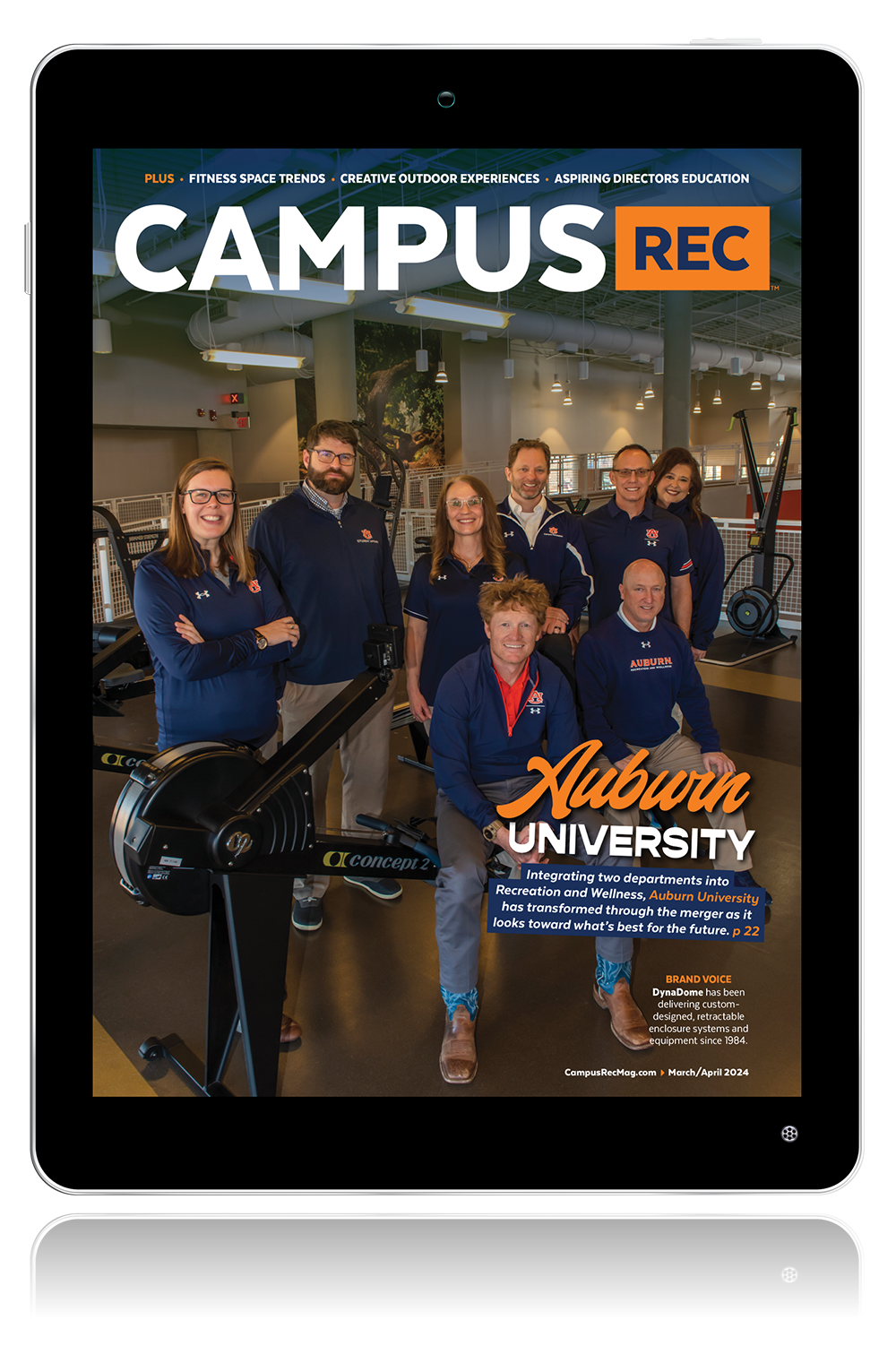Creating revenue opportunities is one of the most difficult challenges facing campus rec departments. Tim Mertz, the director of campus recreation at MIT, sought to overcome this obstacle and help his student leadership staff improve their budgeting skills along the way. The result was the 3-2-1 Model.
The 3-2-1 Model puts the onus on MIT Recreation leadership team members to come up with revenue-generating, expense-cutting ideas to be implemented throughout the fiscal year.
Below, Mertz shares in his own words his account of creating the 3-2-1 Model and the positive effect it had on his department:
The process in which the MIT Recreation leadership team sets goals for the academic year changed two years ago. At the beginning of the 2018 fiscal year, I modified the retreat and asked the team to develop their goals using a 3-2-1 model I drew up while out for a long run along the Charles River one day. The purpose of this new goal setting format was to:
- Teach the team how directors think about budgeting.
- Show them that reducing existing expense is hard.
- Demonstrate generating new net revenue is an increasingly important budget skill.
I knew if the 3-2-1 Model was executed correctly, it would deliver strategies and goals that would fuel a successful year.
Here is how it works. Each program area must come up with:
- Three Producers
- Producers must produce positive net revenue and will be measured in dollars.
- Two Reducers
- Reducers must reduce an existing expense and will be measured in dollars.
- One Infuser
- Infusers must be budget neutral and will be measured by participation/engagement/retention.
Additionally, each program area was given the flexibility to set their own targets. For example, I did not tell the team they must produce X dollars in new revenue while reducing X dollars in expense. Each team set their own targets.
They could be as aggressive as they wanted. I knew in the end, applying the 3-2-1 Model to all program areas would produce a total of nine new net revenue producing initiatives, six expense reducing initiatives and three new budget neutral initiatives that would increase participation though engagement.
When preparing to implement them in the 2018 fiscal year, the finalized 3-2-1 goals were estimated to positively impact our budget by tens of thousands of dollars. And beyond just financial performance, this 3-2-1 Model did even more. As the teams worked together for weeks preparing for the retreat, their focus on developing new revenue, reducing existing expense and increasing engagement gave them all the opportunity to enhance their executive level skills. As it turned out, the cumulative impact of the 3-2-1 goals in the 2018 fiscal was 1.5 times more than originally projected.
Looking back, the most successful producer goals were:
- Redeveloping the Fitness Assessment offering.
- Expanding hours for summer and second quarter learn-to-swim programs.
- Expanding the pro shop to include sports nutrition items.
The most successful reducers were:
- Streamline operational costs relating to subscription services.
- Reducing lifeguard expenses via cross training and scheduling efficiencies.
The most successful infusers were:
- Hosting of a dive-in movie night and a free swim lesson offering.
- Implementing a knowledge campaign.
Interview by Bobby Dyer.










